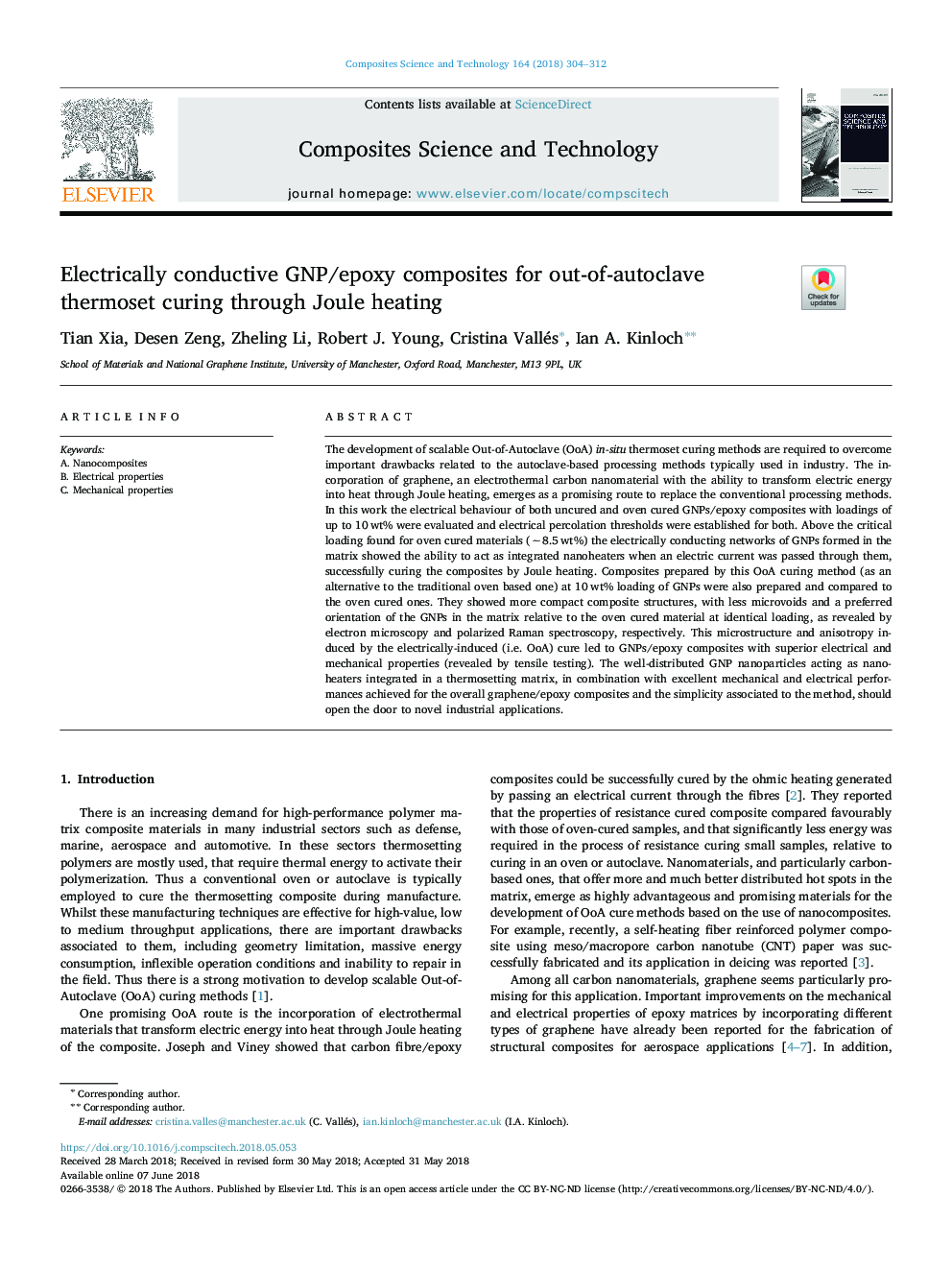| Article ID | Journal | Published Year | Pages | File Type |
|---|---|---|---|---|
| 7214285 | Composites Science and Technology | 2018 | 9 Pages |
Abstract
The development of scalable Out-of-Autoclave (OoA) in-situ thermoset curing methods are required to overcome important drawbacks related to the autoclave-based processing methods typically used in industry. The incorporation of graphene, an electrothermal carbon nanomaterial with the ability to transform electric energy into heat through Joule heating, emerges as a promising route to replace the conventional processing methods. In this work the electrical behaviour of both uncured and oven cured GNPs/epoxy composites with loadings of up to 10â¯wt% were evaluated and electrical percolation thresholds were established for both. Above the critical loading found for oven cured materials (â¼8.5â¯wt%) the electrically conducting networks of GNPs formed in the matrix showed the ability to act as integrated nanoheaters when an electric current was passed through them, successfully curing the composites by Joule heating. Composites prepared by this OoA curing method (as an alternative to the traditional oven based one) at 10â¯wt% loading of GNPs were also prepared and compared to the oven cured ones. They showed more compact composite structures, with less microvoids and a preferred orientation of the GNPs in the matrix relative to the oven cured material at identical loading, as revealed by electron microscopy and polarized Raman spectroscopy, respectively. This microstructure and anisotropy induced by the electrically-induced (i.e. OoA) cure led to GNPs/epoxy composites with superior electrical and mechanical properties (revealed by tensile testing). The well-distributed GNP nanoparticles acting as nanoheaters integrated in a thermosetting matrix, in combination with excellent mechanical and electrical performances achieved for the overall graphene/epoxy composites and the simplicity associated to the method, should open the door to novel industrial applications.
Related Topics
Physical Sciences and Engineering
Engineering
Engineering (General)
Authors
Tian Xia, Desen Zeng, Zheling Li, Robert J. Young, Cristina Vallés, Ian A. Kinloch,
